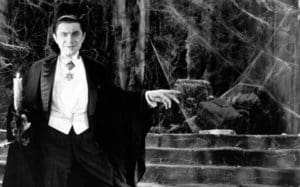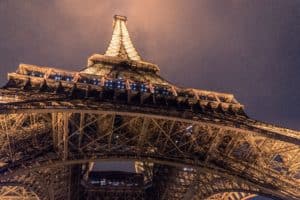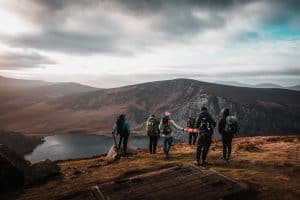The Tradition of Storytelling: Ireland’s Impact on Global Narratives

Updated On: April 22, 2024 by Eman Sameh
Ireland has long held a revered place in the realm of storytelling, contributing a rich tapestry of narrative heritage to world literature. The tradition of storytelling in Ireland is interwoven with the nation’s history, with roots that reach back through the centuries. This custom has acted not only as a form of entertainment but also as a vital means of preserving the cultural identity and history of the Irish people. Storytellers have passed down tales that form the foundation of Ireland’s profound literary influence on the world stage through a blend of language, music, and performance.

Amidst the verdant hills and rugged coastlines, the oral literary tradition of Ireland thrived, producing a legacy of myths and legends that resonate with universal themes. The compelling narratives contain enchanting tales of heroes, the supernatural, and everyday life that reflect the complexities of human existence. The unique geographical setting of Ireland, along with its historical struggles and triumphs, has infused these stories with a distinct character. Over time, Irish storytelling has evolved, maintaining its essence while adapting to the changing world, influencing countless writers and reaching audiences far beyond its shores.
The Tradition of Storytelling Roots in Ireland
Through our exploration, we’ve found that the art of storytelling in Ireland stands as a testament to the country’s rich history and cultural heritage, a tradition ingrained with mythical lore and an undying oral tradition.
Mythical Foundations
Ireland’s storytelling tradition is deeply embedded in ancient Celtic culture and mythology. The tales often recount the exploits of heroic figures and the mystical deities of old inhabitants of the Otherworld in Irish myth. From the powerful Tuatha Dé Danann to the legendary Fionn mac Cumhaill and his band of warriors, these stories preserved in ancient manuscripts such as the Book of Leinster are striking for their depth, capturing the imagination for centuries.
Oral Tradition and the Seanchaí
The Seanchaí, or traditional Irish storytellers, were custodians of Ireland’s oral tradition, a living conduit between the past and present. They shouldered the vital role of preserving history, culture, and ancient lore through their craft. Utilising a compelling narrative style, these storytellers would pass from town to town, breathing life into tales encompassing every aspect of Irish life, from history and genealogy to lore and mythology, ensuring each story’s perpetuity through generations. This tradition of oral storytelling is a distinctive feature of Irish culture, one that has contributed significantly to world literature.
Literary Evolution over Centuries
We see that Irish storytelling has a profundity and reach that has evolved over many centuries, influencing not only local culture but also the wider world of literature.
Early Irish Literature
The heritage of early Irish literature is a rich tapestry that dates back to the 4th century. Initially, this literary tradition was preserved orally, with stories passed down through generations before they were finally transcribed by monks in manuscripts like the Book of Leinster. This body of work includes mythological tales of deities and heroes that form a cornerstone of Ireland’s cultural identity.
The Ulster Cycle and Bards
The Ulster Cycle is one of the great collections of early Irish literature. Tales of heroism, honour, and tragedy are threaded throughout this legendary cycle, which includes the renowned Táin Bó Cúailnge. Bards, the revered keepers of stories and history, played an instrumental role in preserving these legends, with their recitations echoing through courts and countryside alike, fortifying the oral tradition that underpinned Irish cultural and literary heritage.
Preserving and Promoting Irish Storytelling

We recognise that storytelling in Ireland is not merely a pastime but a vital thread in the fabric of our cultural identity. This craft, rich in tradition and steeped in history, continues to be a key vehicle for sharing the collective memory and values of the Irish people.
Festivals and Community Events
Festivals play a crucial role in celebrating and preserving the centuries-old practice of storytelling. One such event is the Cape Clear Island International Storytelling Festival, which brings together enthusiasts and raconteurs from across the globe. This aligns with our dedication to fostering a sense of community around this art form. At these gatherings, tales of púcas, faeries, and the exploits of heroes like Cú Chulainn come to life, captivating audiences and ensuring that the oral traditions of our ancestors endure.
Revival and Contemporary Efforts
Efforts to revive Irish storytelling are multifaceted, ranging from local community initiatives to broader cultural movements. There’s been a sustained interest in integrating storytelling into modern media, as seen with the initiatives of Storytellers of Ireland, which are propelling the narrative arts into contemporary relevance. These narratives not only echo the voices of Gaelic poets and seanchaithe but also resonate with the digital age, engaging new audiences and adapting to evolving platforms for story dissemination.
Cultural Significance of Irish Myths and Legends
In our cultural narrative, Irish myths and legends not only enchant the imagination but also convey profound insights into our people’s values and identity.
The Role of Mythical Heroes
Mythical heroes in Irish lore exemplify the principles and virtues held in high regard within our culture. Cú Chulainn is a paramount figure, renowned for his superhuman skills and unwavering bravery. Tales of his exploits with the Red Branch Knights encapsulate the heroic ideal and continue to inspire admiration for strength and honour in our collective consciousness.
Tales of Wisdom and Morality
Folklore conveys wisdom and moral lessons through captivating tales. The exploits and trials of the Fianna, a legendary band of warriors, illustrate complex ethical dilemmas, instructing us on the subtle art of leadership and the importance of loyalty. These narratives have been shared and preserved within our culture, providing a moral compass for generations.
Impact of Geography on Irish Storytelling

In exploring the tradition of Irish storytelling, we must consider how the distinct geographical features of Ireland have influenced its narratives. From the rugged terrain to the encompassing sea, geography has played a crucial role in shaping Irish lore.
The Landscape and Nature
Ireland’s landscape is a rich tapestry of rolling hills, verdant fields, and dramatic cliffs. Nature is not just a backdrop but a central character in many traditional stories, with landmarks often imbued with mythological significance. The Giant’s Causeway, for instance, is said to have been formed by the legendary giant Fionn mac Cumhaill as stepping stones to Scotland. Such elements of land and nature are intertwined with the lives and tales of the people, giving rise to a literature that celebrates and personifies the green hills and valleys that are synonymous with Ireland.
The Sea and Island Identity
The vast sea around Ireland has fostered a strong island identity, which is deeply interwoven with Irish storytelling. Maritime tales of voyages, battles, and the challenges faced by island communities contribute significantly to the national narrative. The sea is often depicted as a boundary between the mortal world and the Otherworld, as much a source of sustenance as it is of mystery. This deep connection has led to a wealth of stories where the sea is both a perilous adversary and a pathway to adventure, reflecting the Irish people’s enduring relationship with the waters that encapsulate their island home.
Ireland’s Oral Literary Tradition

In the tapestry of Irish culture, the oral literary tradition stands out as a vibrant thread, intricately woven with wisdom and narratives passed down through countless generations. Our storytelling is not just entertainment; it’s the vessel by which we’ve preserved our heritage and transferred knowledge.
Passing Knowledge through Generations
We have long embraced the spoken word as a crucial means of education and cultural continuity. The seanchaí, our traditional storytellers, was revered within communities, akin to walking libraries that carried the annals of our past in their memories. They ensured that with each generation, the trove of Irish lore and wisdom remained intact, allowing our rich history, myths, and legends to persist even without the written word. As modern carriers of this tradition, we recognise these storytellers for their essential role in keeping Ireland’s history alive, passing down tales that resonate as strongly today as ever.
The ‘Google of Ancient Times’
In a time before instant access to information, our ancestral storytellers functioned as the ‘Google of Ancient Times’. Their knowledge was vast, covering genealogies, folklore, law, and natural medicines. These accounts were not just heard but experienced, with the storytellers employing a mix of oratory skills, emotion, and interaction with their audience, making each story an immersive event. Indeed, their narratives would captivate listeners, a testament to the power of their words and the value placed upon oral accounts as a cornerstone of societal wisdom. This tradition emphasised the importance of the ears—an organ for learning and passing down knowledge, as critical then as it is now in the preservation of our identity and history.
Language, Music, and Performance

In exploring Ireland’s storied tradition, we uncover the intricate ties between language, music, and performance that have played a pivotal role in the nation’s contribution to world literature.
The Role of the Irish Language
Our Gaelic tongue is not merely a means of communication; it’s the repository of Ireland’s mythos and values. Within the framework of traditional Irish storytelling, or “seanchaí”, the language’s rhythm and tonality enhance the narrative, enthralling the listener and elevating the tale beyond mere words. The Irish language infuses stories with a distinctive intonation that has been a crucial aspect of our oral heritage.
Integration with Music and Songs
Interwoven with the threads of spoken word, music has been a bedrock of our storytelling. The use of folk songs accompanies tales, acting as emotional cues and further enriching the storytelling experience. These performances often feature traditional Irish instruments, like the harp and tin whistle, creating a holistic experience that encapsulates both the narrative skill and musical prowess of the Irish storyteller. Our folk music, with its inherent narrative capabilities, has contributed significantly to the global tapestry of world literature.
Influential Figures in Irish Literature
Irish literature boasts a wealth of talented individuals who have left indelible marks on the world of letters. Each has contributed uniquely and profoundly to the literary tapestry from poets to novelists.
Legendary Writers and Poets
Seamus Heaney, a Nobel Prize-winning poet, captured the essence of Irish rural life with uncanny precision and emotional depth. His work reflects a deep connection to the Irish landscape and identity. His verse has greatly enriched Ireland’s tradition of storytelling.
James Joyce, perhaps one of the most influential writers of the 20th century, revolutionised the modern novel. His groundbreaking work, “Ulysses”, challenged narrative conventions and provided a bold, stream-of-consciousness depiction of Dublin.
Contemporary Irish Authors
Anne Enright, a Booker Prize laureate, is celebrated for her perceptive and poignant narratives that often explore the intricacies of family and identity in modern Ireland.
Colm Tóibín is renowned for his eloquent prose and the subtle exploration of themes such as exile, return, and the complexities inherent in human relationships. His works, including the acclaimed novel “Brooklyn”, have secured his place among contemporary literary greats.
Throughout the history of Irish literature, figures such as Maria Edgeworth have also contributed significantly, particularly during the 19th century, with works that highlighted Irish society and its nuances.
Our literary heritage, imbued with the spirit of Ireland’s past and the vibrancy of its present, continues to influence and inspire readers and writers across the world.
The Global Reach of Irish Storytelling
Irish storytelling has journeyed far beyond the shores of the island, intertwining with cultures worldwide and leaving a lasting mark on global literature.
Irish Diaspora and Cultural Exchange
The Irish diaspora has played a crucial role in disseminating our storytelling heritage around the globe. As Irish people emigrated, particularly to places like the United States, Australia, and Canada, they carried with them our rich oral traditions. In cities like New York and Boston, Irish pubs and cultural organisations have become hubs where tales from the homeland are exchanged and celebrated, while in regions with significant Irish populations, festivals and events dedicated to Irish arts and culture help to preserve these traditions. Through such cultural exchange, the essence of Irish storytelling – with its typically engaging narrative style – has taken root around the world, resonating with diverse audiences.
Ireland’s Impact on World Literature
The influence of Ireland on world literature is immense. An island famed for its literary heritage, Ireland has produced a multitude of storytellers, from the seanchaí of the past to modern-day authors. Dublin, famed for its literary history and celebrated through its designation as a UNESCO City of Literature, has given us some of the giants of 20th-century literature.
Authors like James Joyce, W. B. Yeats, and Samuel Beckett have had an indelible impact on literary arts internationally, often drawing from the island’s ancient tradition of storytelling. Their works, steeped in the themes and vernacular of Irish culture, have found their way onto bookshelves and into classrooms worldwide. The tradition of Irish storytelling, with its blend of myth, humour, and wit, has undeniably shaped how stories are told and appreciated across continents. It has inspired literary movements and led to the creation of new narrative forms in countries far removed from the green landscape of Kerry or the coastal cliffs of Cork.
Modern Adaptations and Media

In the realm of modern adaptations, Ireland’s storytelling legacy thrives, finding new life in various media and educational initiatives that preserve and reinterpret our Celtic and Irish cultural heritage.
From Text to Film and Digital
We’ve witnessed our rich stories transition from ancient manuscripts to captivating films, inviting a broader audience to experience the tapestry of Irish folklore. Websites like Connolly Cove have become bastions for promoting our culture. They provide a digital stage for Ireland’s narratives, exposing them to global audiences and ensuring the resilience and relevance of our traditions in a digitised world.
The Educational System and Digital Archiving
Schools integrate Irish lore into the curriculum, fostering an appreciation for our history among younger generations. In addition, libraries and educational websites are pivotal in digitally archiving literary works. They transform Ireland’s storytelling into interactive experiences, ensuring its accessibility and preservation. This is not just an act of maintaining records; it’s actively engaging with our cultural DNA, repurposing it for contemporary consumption and learning.
Frequently Asked Questions

In our exploration of Ireland’s literary heritage, we often come upon a series of inquiries that reflect the global curiosity about this nation’s storytelling prowess.
How has the role of the Seanchaí influenced Ireland’s literary history?
The Seanchaí, or traditional Irish storyteller, has been central in preserving oral narratives, a practice which laid the foundation for Ireland’s rich literary tapestry. These figures were custodians of folklore, ensuring each generation could access the wisdom and entertainment of past ages.
What are the characteristics that make Irish storytelling unique?
Irish storytelling is marked by its lyrical language, a strong sense of wit, and an inherent connection to the mythic and natural world. It often blends the ordinary with the supernatural, revealing a deep-rooted cultural identity through its narratives.
In what ways has Ireland’s storytelling tradition impacted contemporary literature?
Ireland’s storytelling tradition has imbued contemporary literature with a narrative richness, an affinity for language, and a deep-seated appreciation of folklore and myth. It has shaped literary techniques and themes, influencing countless modern-day writers.
How does the author reveal the significance of storytelling in ‘Storytelling and Cultural Traditions’?
In “Storytelling and Cultural Traditions,” the author illuminates storytelling’s role as a vessel for cultural values, history, and collective identity, thus cementing its importance in both preserving and evolving Irish culture.
What are the historical and cultural significances of storytelling in Irish society?
Storytelling in Irish society has been a crucial means for transmitting history, educating on moral and social norms, and strengthening community bonds. It is an art form that has both entertained and united people across the centuries.
How do the storytelling traditions of Ireland compare with those of other cultures globally?
While many cultures share the tradition of oral storytelling, Ireland’s version stands out for its intimate ties to Celtic lore, its contribution to the island’s historical narrative, and its influential role in the structure of modern literary forms.






